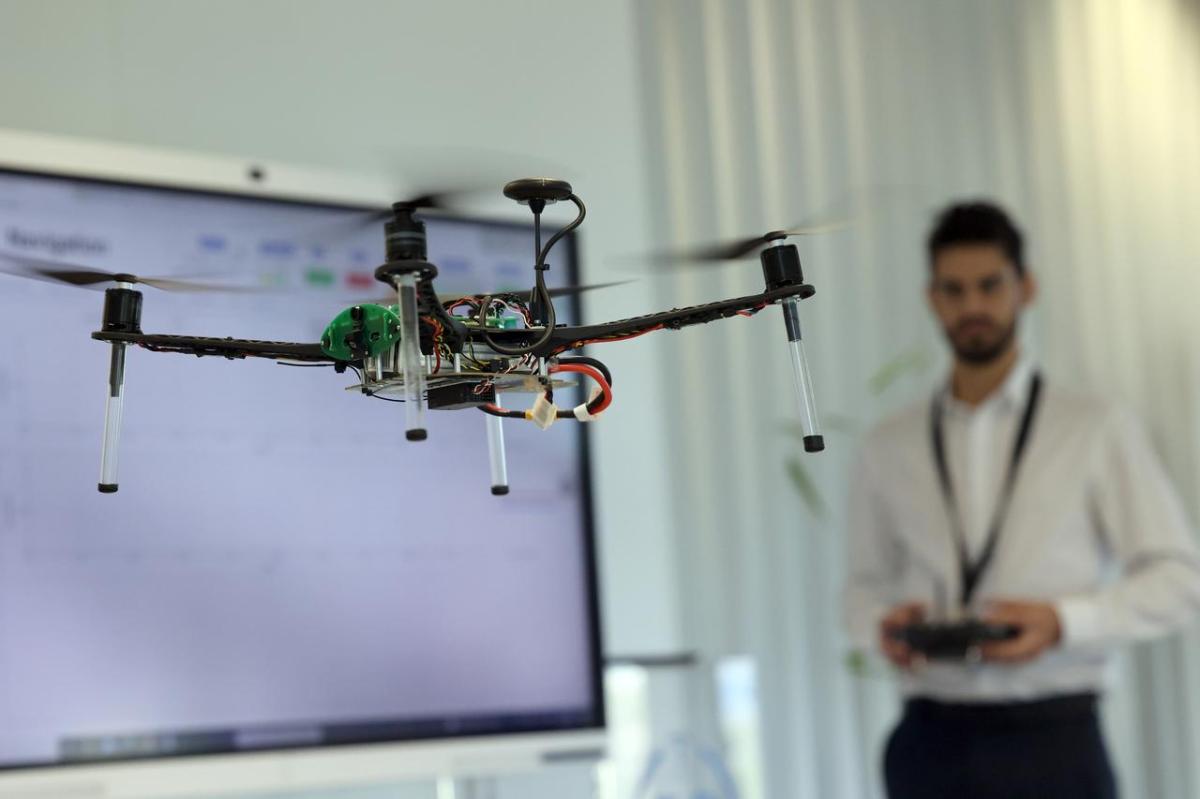Non-humanoid robots are among the technological advances that will be implemented in companies in the coming years, according to the latest Future of Jobs 2023 report by the World Economic Forum. And unmanned aircraft fall into this category. Thus, training as a drone pilot is positioning itself as a job option with a future. The European Commission forecasts that this industry will generate 150,000 jobs in the European Union by 2050.
The global commercial drone market size was estimated at USD 19.89 billion in 2022 and is expected to grow at a compound annual growth rate (CAGR) of 13.9% from 2023 to 2030, according to the Grand View Research report forecast. Contributing to this increase will be the integration of technologies such as artificial intelligence (AI) that facilitate real-time visual and environmental data collection and analysis, the report notes: “AI, sensor analytics, data processing and networking capabilities will help drones collaborate with 3D printers, robots and other technologies”.
In Spain, according to data from the Spanish State Aviation Safety Agency (AESA), 71,177 operators were registered by the end of 2022, almost double the number in 2021, reflecting the booming drone sector. Data from ENAIRE, Spain’s national air navigation manager, also points to this growth: demand for drone operations increased by 70% in 2022 compared to the previous year.
Drone technology is playing an increasingly important role in many industries, and will continue to do so because these devices are becoming more powerful, robust and intelligent. In some fields, their impact is particularly strong, such as film and television. Here is a sample of the most in-demand job profiles.
Rescue, emergency management and surveillance
Fire extinguishing, search and rescue operations, maritime rescue, perimeter surveillance, road or crop monitoring, structural damage assessment, delivery of vital supplies… Drones enable rapid damage assessment and help coordinate the efforts of emergency services and security forces.
Because of their compact design, they can be deployed quickly to assist in these operations and save lives. They also provide a safe way to collect data in areas dangerous to humans and to monitor areas that are difficult for manned aircraft to access. Drones are also used to map areas affected by natural disasters such as hurricanes, floods, earthquakes and landslides.
In the military, UAVs are increasingly used in conflicts. For reconnaissance, surveillance, damage assessment, intelligence, search and rescue operations, air traffic control, heavy-lift transport, convoy protection and strike missions, among others.
Agriculture and environment
Drone pilots also work in agriculture and livestock, to improve crop yields, monitor livestock and support asset management. They use them to collect data and automate tasks. In this way, they improve productivity. These devices also make it possible to assess the growth and health of plantations.
In short, they are essential for precision farming. This concept of farm management involves the use of sensors and analysis tools to strategically rotate crops and plant them more efficiently. It is a way to optimise yields and reduce costs. Drones are applied in planting, irrigation planning, resource allocation, sustainability monitoring and land surveillance.
In the field of environmental care, unmanned aerial vehicles can also be used to combat climate change (they assess surface reflectivity and record how much solar energy is reflected and absorbed in a region). They also carry out tasks such as spreading seeds to plant trees, mapping inaccessible areas (e.g. rainforests) or monitoring the population of a species to determine its range, among many others.
Indirectly, another way to contribute to the protection of the planet is the delivery of packages or goods with drones. However, both commercial and logistics drones still present technical and legal challenges for their safe use. According to the pilot tests carried out in our country, these aerial deliveries will give prominence to rooftops and containers or mailboxes called droneboxes.
Audiovisual sector
In recent years, drones have become increasingly popular in film, journalism, photography and events and shows to film or take snapshots from a bird’s eye view or from new angles and perspectives. This has made it possible not only to get impressive aerial shots but also to reduce costs considerably.
A thousand and one more job opportunities can be added to the list of career opportunities as a drone pilot: topography, cartography, logistics, real estate, energy, telecommunications, construction, mining, insurance, sports training, archaeology, geology, oceanography, transport, forensic science, drone instructor…
